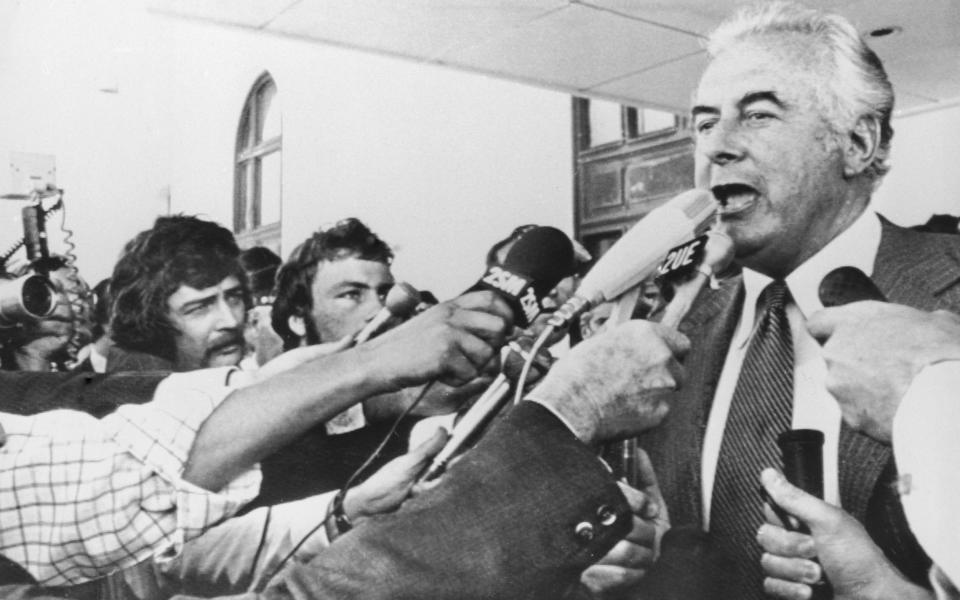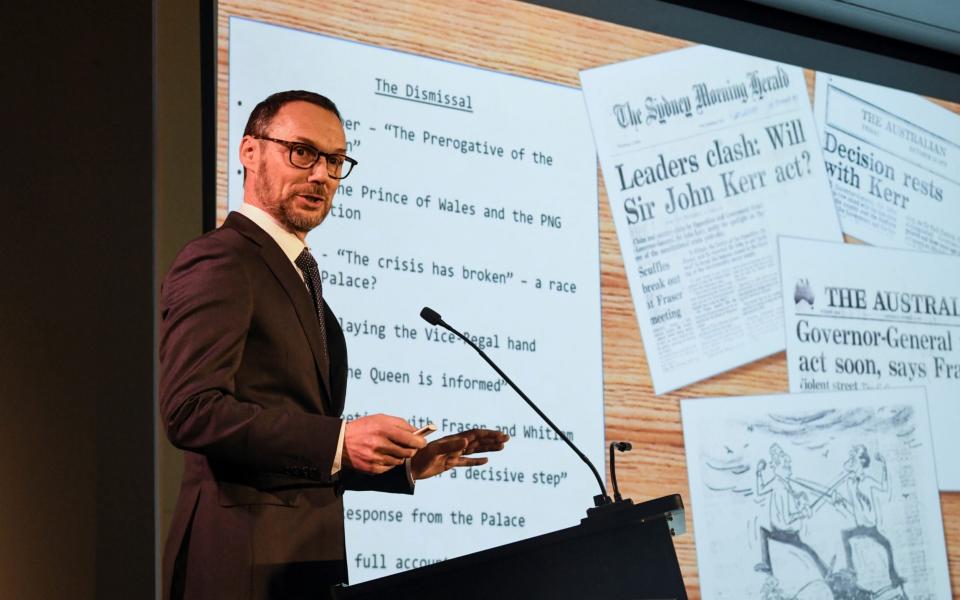Queen was not told of Governor-General’s plan to sack Australian Prime Minister, letters show

The Queen was not directly warned of the Australian Governor-General’s plan to dismiss the Whitlam Government in 1975, newly published letters revealed on Tuesday.
The more-than 1,200 pages of correspondence between Sir John Kerr and Her Majesty was kept confidential for almost 45 years, and was only released after a four-year legal battle by political scientist and author, Professor Jenny Hocking.
The Palace Letters reveal that the Governor-General did write to the Queen on the subject of his reserve powers, including the power to dismiss the Prime Minister, as early as 12 September 1975 – two months before the dismissal on 11 November.
The correspondence also revealed that the Governor General did not warn Gough Whitlam of his plans out of fear the Prime Minister would ask the Queen to remove him, a fear he had also discussed with Prince Charles during his tour of Australia that year.
In October, 1975, Mr Charteris and Sir John had discussed the possibility of Mr Whitlam asking the Queen to dismiss Kerr as Governor-General.
Mr Charteris wrote: “Prince Charles told me a good deal, and you’d spoken of the possibility of the Prime Minister advising the Queen to terminate your commission... at the end of the road, the Queen - as a constitutional sovereign - would have no option but to follow the advice of her Prime Minister.”

After dismissing the government on 11 November, Sir John wrote to the Martin Charteris, the Queen’s private secretary, that same day that he had done so “without informing the palace in advance because, under the Constitution, the responsibility is mine, and I was of the opinion it was better for Her Majesty not to know in advance, though it is of course my duty to tell her immediately.”
Six days after the dismissal, Mr Charteris told Sir John - in his first written response - that in not informing the Queen of his plan in advance, the Governor General “acted not only with perfect constitutional propriety but also with admirable consideration for Her Majesty’s position”.
In a letter after the dismissal, Sir John wrote that friends had severed ties with him, believing that he had conspired with the Leader of the Opposition, Malcom Fraser, in removing the Prime Minister.
He also noted that Mr Whitlam was in “a very great rage” after the dismissal. On the steps of Parliament House after his dismissal, Mr Whitlam said “well may we say God Save The Queen, because nothing will save the Governor General”.
The letter also revealed for the first time that Mr Whitlam called Buckingham Palace on the day of the dismissal.
Mr Charteris wrote of the call: “Mr Whitlam prefaced his remarks by saying that he was speaking as a ‘private citizen’ ... and said that now supply had been passed he should be re-commissioned as Prime Minister so that he could choose his own time to call an election.”
“He spoke calmly and did not ask me to make any approach to the Queen,” Mr Charteris wrote.
Due to higher than usual traffic, RecordSearch is temporarily unavailable. Thank you for your patience as we work to restore the service.
— National Archives of Australia (@naagovau) July 14, 2020
Once dismissed, Mr Whitlam urged his supporters to “maintain your rage” but Labor lost the subsequent general election that year.
Mr Whitlam’s Labor Party was elected as the Federal Government of Australia in 1972 after 23 years in Opposition. The Federal Labor Party had been severely weakened by a split in 1955.
Once in office, Mr Whitlam and his ministers embarked on an aggressive campaign of reform.

Domestically, Labor , among other things, abolished university fees, created a national Schools Commission to allocate federal funding to schools, established the National Sewerage Program, changed the constitution – by referendum – to give the Federal government authority to legislate on programs and policies pertaining to Aboriginal and Torres Strait Islander people, created a universal healthcare system Medibank – now known as Medicare - instituted uniform rail gauge lines across the country, and passed the Racial Discrimination Act.
Internationally the government’s policies led one American commentator to write that no country had “reversed its posture in international affairs so totally without going through a domestic revolution”. As Opposition Leader on 1971 Mr Whitlam visited China, and in 1973 he became the first Australian Prime Minister to do so.
Labor was re-elected in 1974, but lost control of the Senate when one of the party’s senators died and the government of Queensland defied convention by choosing his replacement, rather than sending the party’s preferred candidate.
The government was rocked by scandals and by worsening economic crisis of 1973-75. The Opposition blocked supply in October, sabotaging Labor’s ability to govern effectively, which led to a constitutional crisis and, ultimately, the Governor-General’s intervention and dismissal of the government on 11 November, 1975.
Mr Fricker, told local media that the National Archives released 20,000 records a year but received 40,000 requests a year.
“I acknowledge the perseverance and dedication of Professor Jenny Hocking. And I want to say again on public record that, while for the past few years, for good reasons, I think, Jenny and I have been in opposite corners throughout this court case, however, never once have we disagreed on the value of the records or the extent to which they might illuminate the understanding of what is a tumultuous period in Australia’s history,” he said.

 Yahoo Finance
Yahoo Finance 